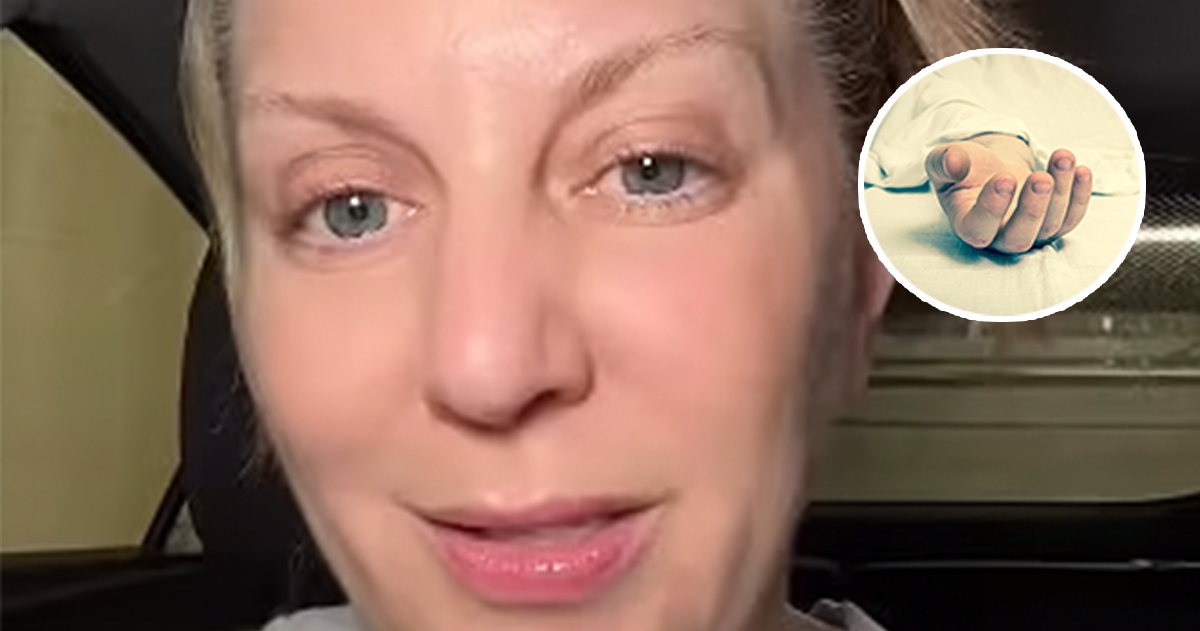No matter who we are or where we come from, there’s one certainty none of us can escape — death. And even though it touches every life, it continues to feel like the ultimate unknown, often wrapped in silence, fear, and uncertainty.
But one woman has made it her mission to lift the veil on what really happens when we die — not to scare, but to soothe. Hospice nurse Julie McFadden is using her experience and voice to guide families through their most vulnerable moments, offering clarity and comfort through the confusing signs that can appear as a person nears the end.
Bringing Death Into the Light
Julie McFadden, a seasoned nurse based in Los Angeles, has devoted more than 15 years to caring for patients in both critical care units and hospice settings. Throughout her career, she’s witnessed death not as a rare event, but a daily reality — something she says needs to be talked about more openly.
“Back when I worked in the ICU, we’d often discuss patients’ prognoses privately among medical staff, but we rarely had open, honest conversations with the families,” Julie shares. “That didn’t sit right with me. I realized these families deserved more — more understanding, more compassion, and more preparation.”
This calling led her to social media, where she now educates hundreds of thousands about what really happens during the final days and hours of life. Through her videos and recently published book, she hopes to strip away the fear and stigma that so often surrounds death.
What the Final Moments Really Look Like
In one of her most widely viewed posts, McFadden speaks candidly about two physical signs that frequently occur as life begins to slip away — signs that often catch families off guard and can be deeply unsettling without proper context.
1. Breathing Patterns That Shift Unexpectedly
One of the most jarring experiences for loved ones at the bedside is a sudden and unusual change in breathing. This pattern — known medically as Cheyne-Stokes respiration — is marked by short bursts of rapid breaths, followed by long, silent pauses.
“To someone who’s not expecting it, it can feel terrifying — like the person is struggling,” McFadden explains. “But it’s not suffering. It’s simply the body following its natural rhythm as it shuts down.”
This type of breathing typically occurs as the brain and body respond to chemical changes in the blood, particularly in how it senses carbon dioxide. While it may look dramatic, Julie reassures families that the person is usually fully unconscious and at peace.
In one of her videos, she shows this firsthand, explaining how the stillness of the patient’s body — relaxed and calm — is a clear indication that they are not in distress. “There’s no sign of panic or resistance. That tells us everything,” she says.
2. The Sound That Haunts: The “Death Rattle”
Another symptom that can deeply unsettle those keeping vigil is a distinct, gurgling sound known as the “death rattle.” While the name alone can cause alarm, McFadden emphasizes that it’s a natural and painless occurrence.
What causes it? As a person approaches death, their body slows down — including the reflex to swallow. Saliva and other secretions begin to accumulate in the throat, and when air moves through, it creates a rattling noise that’s often mistaken for difficulty breathing.
“People usually think it’s coming from the lungs, like fluid or choking,” Julie notes. “But really, it’s just pooled saliva. And it’s not hurting them.”
Despite how disconcerting the sound can be to hear, McFadden assures us that it’s not something the dying person is aware of or distressed by. To them, it’s silence.
A Natural Process We Don’t Need to Fear
Through all of this, Julie’s central message remains the same: the human body is remarkably equipped to handle death. It knows how to die, just as it knows how to be born.
“The process, while it may look foreign or even frightening, is often very peaceful,” she says. “And when there is discomfort, we have ways to keep people comfortable and calm.”
Understanding this helps families let go of fear. It allows them to be present, rather than panicked — to say goodbye in peace, not chaos.
The Body’s Quiet Goodbye
As life slips away, subtle changes take over. McFadden explains that even our body chemistry begins to shift. One fascinating detail: the breath and skin of a dying person may emit a particular scent — often compared to nail polish remover — due to a change in metabolic function. It’s caused by the release of certain compounds like putrescine, which our brains are hardwired to associate with death.
This scent, though often unnoticed consciously, can trigger a primal response — an unspoken recognition that death is near.
A Mission Rooted in Compassion
Julie McFadden isn’t trying to glamorize death — she’s trying to make it less terrifying. By pulling back the curtain on what really happens in those last hours, she’s giving families something invaluable: peace of mind.
“Dying is a part of life,” she says. “It’s time we stop treating it like a taboo and start giving people the tools and knowledge to walk through it with grace.”
In the end, her work reminds us that while we can’t change the fact that death comes for us all, we can change how we face it — with courage, understanding, and even peace.
